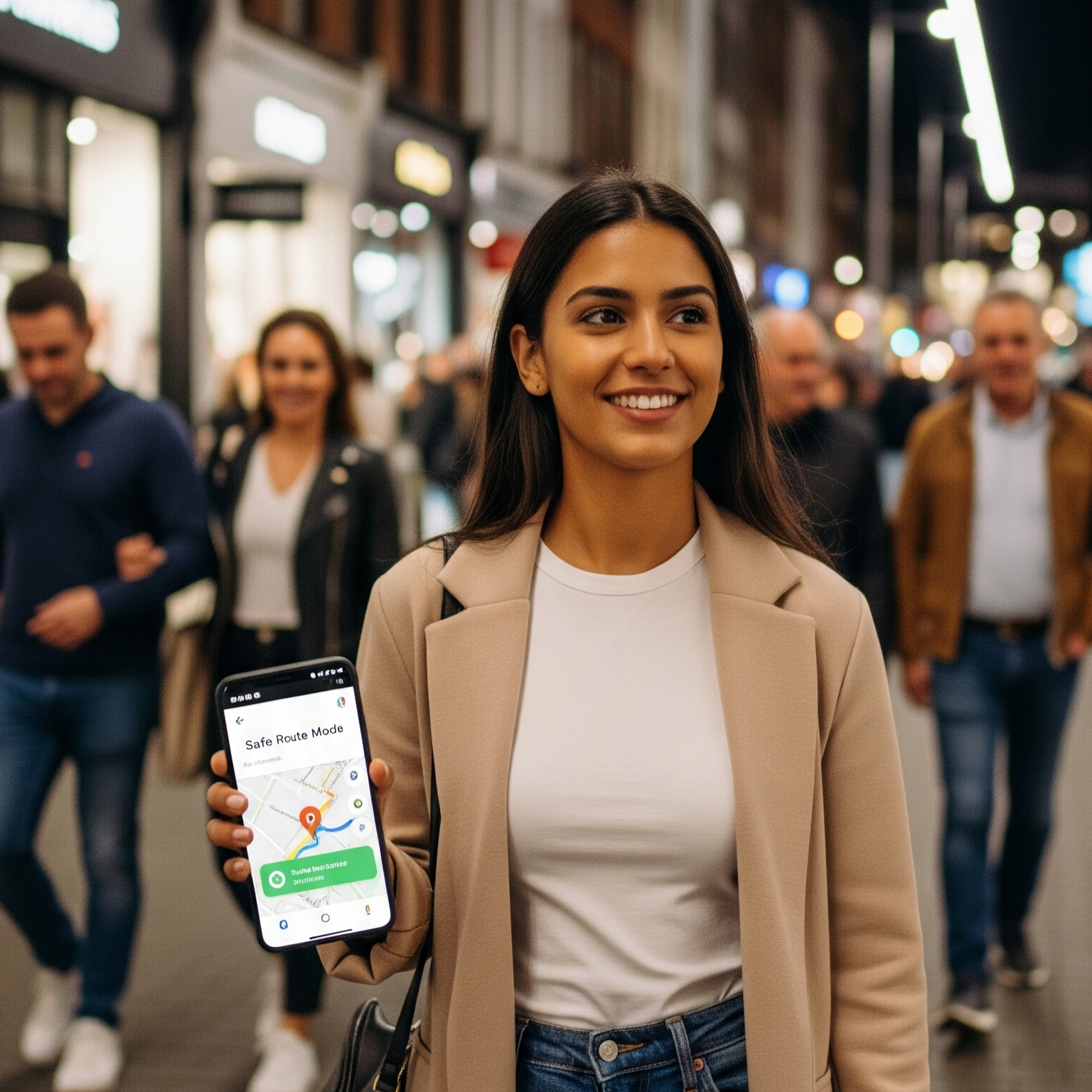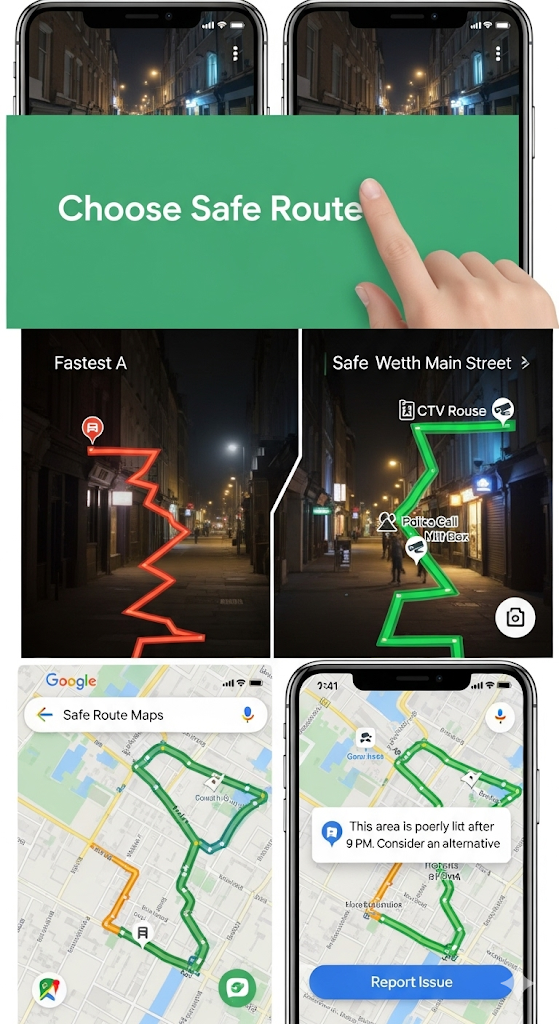Google Maps: Your Safe Route Companion
Concept Design – Mockup
Google Maps, Now Navigating Your Safety.
Choose peace of mind over minutes saved. Safe Route Mode analyzes real-time data — from street brightness to community feedback — to guide you through well-lit, trusted paths. Every journey becomes a little calmer, a little safer.
The Origin of the Project: When “Fastest” Didn’t Feel Safe
This began with something simple — and personal. It was past midnight, and I was walking back from the library to my dorm. I opened Google Maps and, as always, it offered me the “fastest route.” But that shortcut led through a dark, empty street with no lights or people. The app was efficient — but it didn’t feel safe. So I took the longer way. The one along the main roads, under the streetlights. That walk made me realize something: the map knew how to save me time, but not how to make me feel safe. Technology has become incredibly good at efficiency. But maybe in the process, it forgot one of the most human needs — reassurance.
A Route’s Worth Is Measured in Peace of Mind, Not Minutes
A route’s value isn’t defined by speed, but by comfort. Sometimes, an extra five minutes is a small price for feeling secure. A brightly lit street, steady foot traffic, or even the simple presence of a CCTV camera can change how we experience the same distance.
Through Google’s data ecosystem — lighting sensors, live traffic, and community feedback — we can map not just where people go, but how they feel on the way there. Safe Route Mode turns navigation into care. It’s not just about reaching your destination — it’s about arriving there calmly.
Safe Campus: Campus Safety + Navigation
Problem
Most navigation apps optimize for speed — not safety. They might send users down dark shortcuts or empty side streets, unaware of how vulnerable those paths can feel. A 2022 Gallup survey found that 44% of U.S. adults feel unsafe walking alone at night, a fear significantly higher among women and international students. For many, efficiency means little if the route itself sparks anxiety. In its pursuit of logic and speed, the map forgot empathy.
Insight
The real measure of a “good route” is peace of mind. A map shouldn’t just calculate distance — it should understand comfort. According to ABI Research, consumers increasingly value “safety-related features” in navigation apps, from danger zone alerts to safe route guidance. Safety isn’t an extra feature; it’s a form of care. Navigation, when designed empathetically, becomes more than a tool. It becomes a quiet companion walking beside you.
Solution — Safe Route Mode
Safe Route Mode makes Google Maps feel more human — a thoughtful guide that prioritizes safety as much as speed.
Safe Pathing 🛣
The app automatically prefers well-lit streets, main roads, and routes with steady foot traffic. It uses real-time data on brightness, crowd density, and active surveillance areas to guide users toward paths that feel safer.
Safety Markers 📍
Maps highlight visible safety points — such as CCTV cameras, police call boxes, and 24-hour stores — giving reassurance along the way.
💬 Community Feedback
A simple “Report Area” button allows users to mark unsafe or uncomfortable spots:
“Dimly lit after 9 PM”
“Frequent construction noise”
“Feels unsafe at night.”
These reports help build a community-driven “safety layer,” continuously updating the map with real, lived experiences.
Activation 🔔
Before starting navigation, users can tap “Choose Safe Route” right on the home screen — a small, intuitive action that makes a big difference.
Impact
Safe Route Mode transforms navigation into empathy in motion.
For Users
It gives travelers — especially women, students, and vulnerable groups — a quiet sense of protection. Late-night walks feel less lonely when the app walks with you.
For Google
It strengthens Maps’ identity not just as the most accurate navigation tool, but as the most trustworthy one. It reflects a brand that doesn’t just guide — it cares. And care builds loyalty. According to the 2023 Edelman Trust Barometer, 88% of consumers say they stay loyal to brands that take action on social issues. By valuing safety over seconds, Google Maps can lead a new generation of empathetic technology — tools that guide us not just efficiently, but thoughtfully.
—
Speculative UX Concept by Jin Kim
Visual mockups generated with Gemini & ChatGPT (for concept purposes only)




